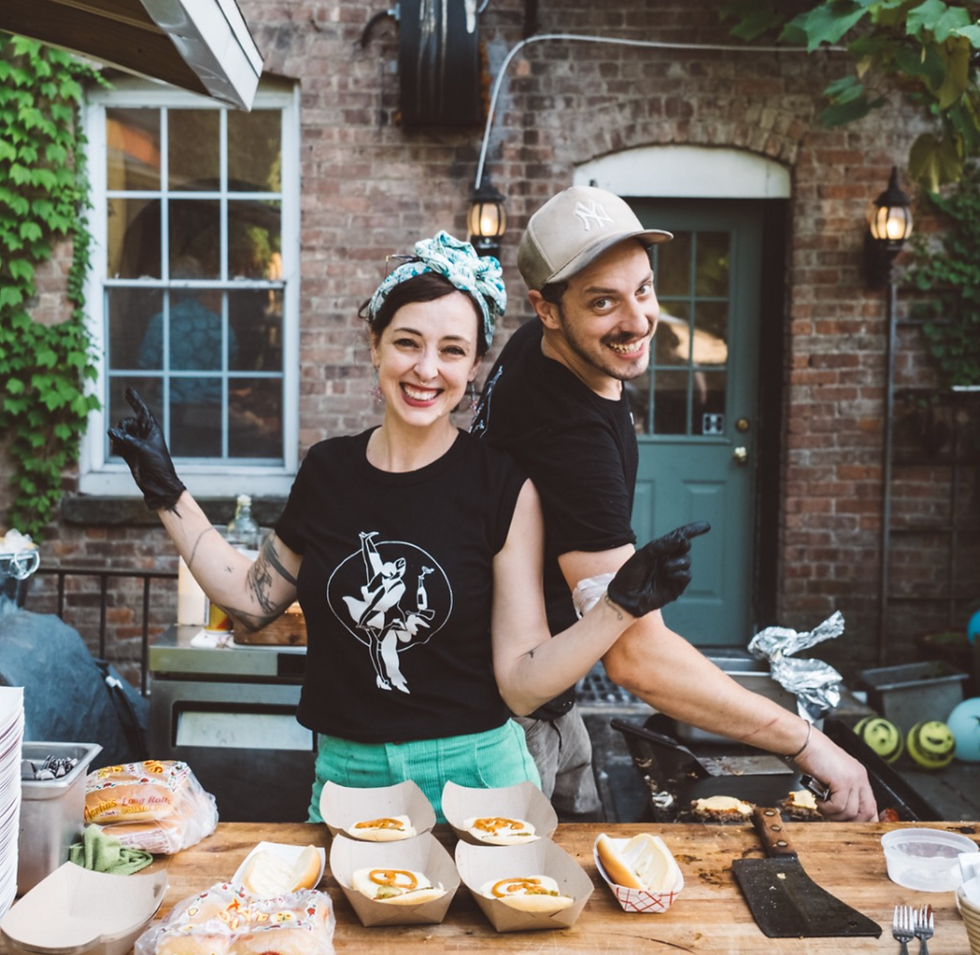Case Study: Coppa Butchery and AgriForaging Compliance Services
- AgriForaging Compliance Services

- Oct 23
- 4 min read
Updated: Oct 29

Client: Coppa Butchery
Location: 21724 E Mission Ave, Liberty Lake, WA 99019
Contact: info@coppabutchery.com
Website: https://www.coppabutchery.com/

Coppa Butchery Today and What Changed
Scope
Coppa Butchery serves the greater Spokane region (WA) as a retail butcher with a growing prepared foods program.
New Lanes
The team stepped into three process lanes that raise the bar on control. Sous vide. Reduced oxygen packaging. Small batch curing.
Implications
Each adds anaerobic risk, time, and temperature control, labels that match the process, and records that prove the work.
Oversight
Retail oversight is through the Spokane Regional Health District.
Objective
Keep the craft, meet inspection, and make it readable on the floor.
What Inspection Needed to See at Coppa
Sous Vide
Inspectors looked for validated time and temperature tables, cooling and reheating that matched those tables, and clear hold limits that staff could follow in live service.
Reduced Oxygen Packaging
They looked for seal checks at the bench, vacuum verification, oxygen readings where useful, shelf life support tied to product and process, and storage statements placed where customers cannot miss them.
Curing
They looked for curing calculations done before the batch, measured weight loss over time, and sanitation verification with an environmental monitoring route focused on the spaces that matter.
Traceability
Labels had to track the process. Records had to link lots, logs, and labels without drama.

Regulatory Pathway for Coppa in Spokane, Washington
Mapping
We mapped each activity to Washington retail code and to Spokane practice.
Triggers
We identified where a variance could be triggered and the controls that keep that review straightforward.
Sequence
We sequenced the build so inspection could verify one step at a time against documents already in use.
Goal
Put the right work in the right order so an inspector can open a folder, follow the day, and close it with confidence.
Gap Work at CoppaWhat we reviewedWe ran a document pass against the Spokane practice and the Washington retail code using Coppa’s shared materials. That set included process notes, draft sous vide tables, reduced oxygen packaging workflow descriptions, label drafts, existing logs, equipment specs, and the floor plan. From that desk review ,we locked sous vide endpoints and cooling paths, added in place seal checks and lot coding for reduced oxygen packaging with a shelf life note in the batch folder. Why it matteredSequencing the fixes on paper prevented rework and let inspection verify one step at a time against records already in use. Training matched the documents on the table, and the labels matched the process, and the environmental monitoring route followed the product path shown in the plan. The result was a calm start with controls that read the same in the folder and on the line. |
Coppa Hazard Analysis and Controls
Fit to Work
The plan matches the actual work.
Sous Vide Controls
Sections address growth and toxin risks by product type and set cooling and reheat paths that tie back to the tables with clear holds.
ROP Controls
Sections include seal checks by run, vacuum verification, oxygen readings (where used), lot coding, shelf-life support tied to process and product, and storage statements that match the record.
Curing controls
Sections show the calculations up front, the progression of weight loss by lot, and the sanitation verification tied to the curing spaces.
Verification
Sanitation verification sits alongside an environmental monitoring route that covers coolers, the curing space, and the packaging bench. Nothing invented. Nothing missing.
Coppa Records and Training
Daily Story
Records tell the same story every day: batch folders link formulation, process logs, seal checks, oxygen readings, and labels.
CCP Evidence
Daily critical control point logs capture limits, misses, and corrective actions without guesswork.
Calibration
Schedules cover probes, scales, the vacuum unit, and the oxygen meter.
Staffing
Training and sign-off are by role, so a new hire can step into a station and know what good looks like.
Purpose
The point is a line of sight from what was made to how it was made and who made it.
Flow and Equipment Placement at Coppa
Layout
Physical flow carries a lot of the load. Raw prep sits apart from sous vide staging. Curing and drying live away from the finished pack.
Placement
Vacuum and cooling are used to keep the travel clean and to give the inspector a clear view of what matters.
Route
The environmental monitoring route follows the same logic. Walk the product path and sample where risk concentrates.
Readability
The space is not flashy. It is readable.

What Changed on the Floor at Coppa
Acceptance
The program is accepted in retail inspection, and reviews move faster.
Corrections
When a limit is missed, the corrective action is clear and closed.
ROP Rhythm
Reduced oxygen packaging runs daily, with seal checks captured in place and shelf-life support available without a scramble.
Curing Posture
Cured items sit on measurable targets with a posture that is ready for questions.
Control
Staff use real-time monitoring and calibration data. The work feels calmer because it is visible.
Notes from Coppa for Peers
Start Early
Do the gap work before you touch the room.
No Templates
A generic plan will not carry sous vide, reduced oxygen packaging, and curing.
Make Evidence
Records with calibration and lot linkage give inspectors what they need and give your team trend data that changes decisions.
Design Choice
Packaging and labeling are part of process control. Put the system on the table and let it speak.
Craft and compliance sit together at Coppa Butchery. The record now reads the same on the floor and in the folder.





Comments